ANIMALS
Cat with Broken Jaw Healed by Buttons Tries Solid Food for the First Time
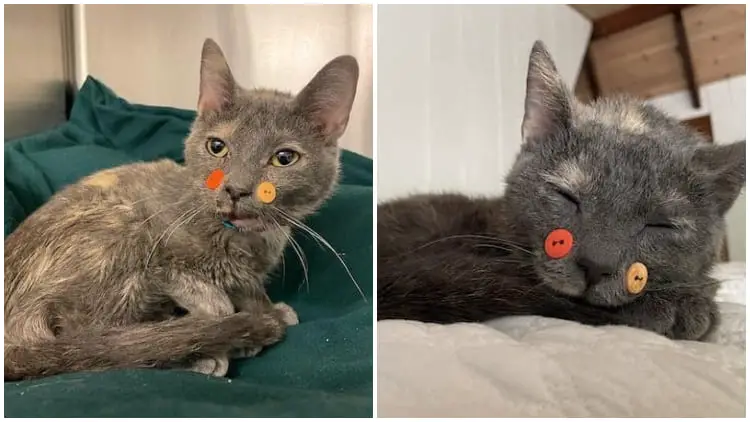
A cute tiny kitten got hurt by a car and had her jaw helped by buttons while she got better. Now, after 7 weeks of being saved, she’s prepared to have her first solid meal.
In May, the kitten was quickly taken to Stray Rescue of St. Louis for help. The shelter’s animal doctors found out she was in bad condition and urgently needed surgery.
“Her little jaw is broken in at least one spot but possibly two, and the tissue on the left side of her face was totally peeled back from her jaw bone,” her rescuers wrote of her examination. “There were already maggots inside the wound,” they added.
 Image source: Stray Rescue of St. Louis
Image source: Stray Rescue of St. Louis
The doctors chose to help “Perma” get better by doing a special surgery called Labial Button surgery. They sewed her jaw closed using buttons, which helped keep the stitches above her skin and gave her the best shot at healing.
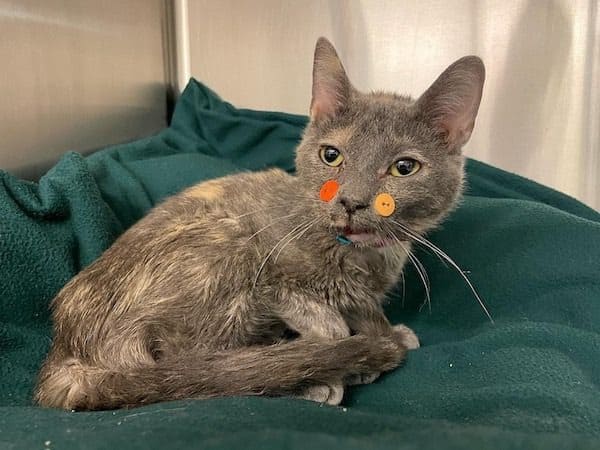 Image source: Stray Rescue of St. Louis
Image source: Stray Rescue of St. Louis
Stray Rescue of St. Louis posted some pictures of Perma after her surgery and wrote on Facebook: “Perma says hello everyone! She’s feeling a lot better already after her emergency surgery. The sutures are holding her jaw in place and we can’t help but tell her how cute her little buttons are.”
They mentioned that the Button surgery is “equivalent to having her jaw wired shut,” and she had to keep them on for 4 to 6 weeks while she got better.
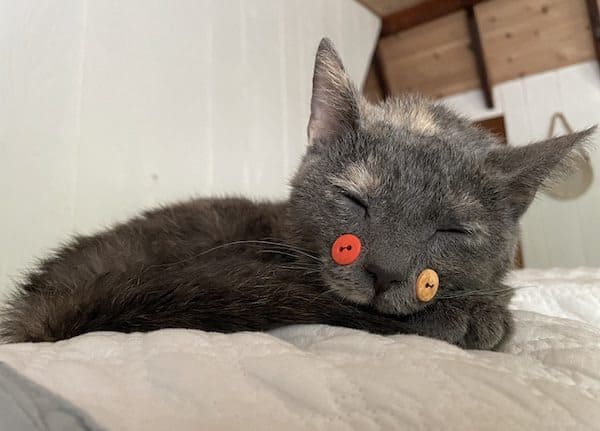 Image source: Stray Rescue of St. Louis
Image source: Stray Rescue of St. Louis
During that period, she stayed in a foster home with one of Stray Rescue’s clinic staff who took care of feeding Perma a liquid diet using a PEG tube. As Perma’s jaw got better, she became more energetic, and her kind and friendly nature became more noticeable.
Her caregivers shared, “We can’t wait until her buttons come off, her feeding tube comes out, and she can eat a delicious Blue Buffalo meal! Hang in there sweetheart, your life is about to get even better.”
Perma has really enjoyed her time in her foster home (where she even got to visit the lake and check out a vacation home). After a month, she was all set to have her buttons taken off and savor her first solid meal!
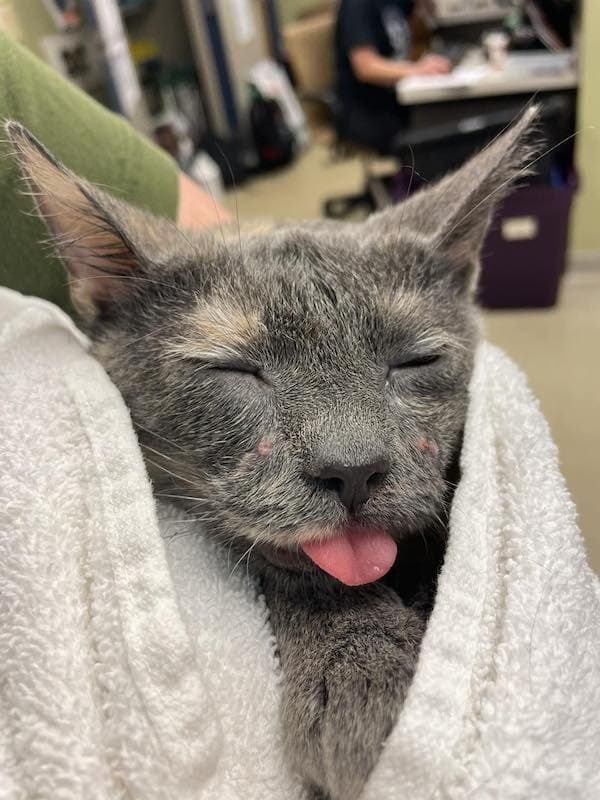 Image source: Stray Rescue of St. Louis
Image source: Stray Rescue of St. Louis
The people who saved her and the family who took care of her were really happy, and they posted a video of Perma’s special day. They wrote, “It’s the moment we’ve been waiting for…! Here she is eating and tasting her first meal since mid-May.”
You can watch the video here:
Her rescuers added, “She’s so strong, brave, and never EVER felt sorry for herself. She’s the sweetest kitty in the W O R L D !! Congratulations, Perma!!”
Without a doubt, Perma will get better even quicker now that she can eat and move her jaw. We’re really glad to see Perma doing so much better and knowing that she’s going to have a great future because of Stray Rescue of St. Louis. If you want to help take care of Perma and other stray animals, you can visit: strayrescue.org/monthly-gift
ANIMALS
Amazing Video of Unseen Ocean Creatures in the Ningaloo Canyons

The Schmidt Ocean Institute recently explored the Ningaloo Canyons on the western coast of Australia using a robotic underwater vehicle called the ROV Sebastian. Check out the amazing video of what they discovered in the deep parts of the Indian Ocean.
More info: Youtube




ANIMALS
These Pics Are Art and the Artists Are Insects
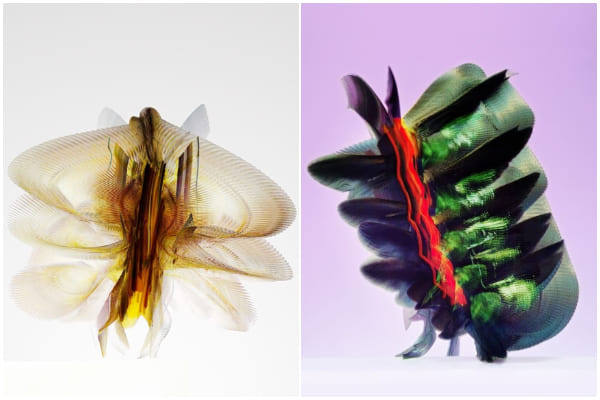
Flying insects move so quickly that they are hard to follow, but new technology and some smart ideas have helped Spanish photographer Xavi Bou do just that. After spending 10 years focusing on birds in flight for his Ornithographies project, he turned his attention to insects.
For Entomographies, he uses high-speed video footage taken by Adrian Smith, an insect expert at North Carolina State University, to study and record how insects move. Bou then picks multiple frames and combines them into single images that show the fast movements of one or more insects through space and time.
With Smith’s help, Bou has captured the aerial tricks of wasps, the jumps of leafhoppers, and the fluttering of butterflies in amazing detail. He hopes that by doing this, he can make people more aware of the decline in important insect populations around the world.
1. Zebra longwing
This butterfly, which is common in many areas of the Americas, really fits its name. It can fly very high with just a few flaps of its large wings.
 Image source: nationalgeographic
Image source: nationalgeographic
2. Two-lined spittlebug
This insect, which comes from the eastern United States, is often seen as a pest because it likes to eat grass. Its springy back legs can make it jump into the air like a rocket.
 Image source: nationalgeographic
Image source: nationalgeographic
3. Yellow-collared scape moth
Unlike most moths, this North American species flies during the day. Its shiny blue-black wings sparkle in the sunlight.
 Image source: nationalgeographic
Image source: nationalgeographic
4. Ailanthus webworm moths
These tropical moths have spread farther north in the U.S. Because of their larval host, the invasive tree of heaven, they are now one of the most common backyard moths in the country.
 Image source: nationalgeographic
Image source: nationalgeographic
5. Common stonefly
Mostly found in eastern North America, this insect starts its life as an underwater nymph in forested streams or rivers. Then it leaves the water, sheds its skin, and becomes an adult with wings.
 Image source: nationalgeographic
Image source: nationalgeographic
6. Green lacewings
Eighty-seven species of this insect have been found in the U.S. and Canada. Since they eat a lot of unwanted plant pests like aphids and mites, they are often used to naturally control these pests.
 Image source: nationalgeographic
Image source: nationalgeographic
7. Grapevine beetle
This insect, fittingly named, eats the leaves and fruit of grapevines, both wild and farmed, but it doesn’t do much damage to the plants. As a type of scarab beetle, it often flies in a curved path.
 Image source: nationalgeographic
Image source: nationalgeographic
8. Oak treehopper and green treehopper
Treehoppers are known for their uniquely shaped pronotum, the part behind their head, which often looks like plant parts to hide from predators. They can jump well thanks to special muscles.
 Image source: nationalgeographic
Image source: nationalgeographic
9. Banded orange
This brightly colored butterfly can be found from Mexico to Brazil. Before mating season, male butterflies look for mineral salts, sometimes even drinking salty fluids from the skin, eyes, and nostrils of other animals.
 Image source: nationalgeographic
Image source: nationalgeographic
10. Sapho longwing
Longwings can live for 6 to 7 months, longer than most butterflies. This type, found from Mexico to Ecuador, has shiny blue wings, which is why it’s also called the Sapphire longwing.
 Image source: nationalgeographic
Image source: nationalgeographic
ANIMALS
Eagle and Fox in an Epic Midair Battle Over a Rabbit, Were Captured by a Photographer

Wildlife photography often depends on the perfect combination of good timing and the right place.
That’s exactly what happened when Kevin Ebi, an experienced wildlife photographer, captured an incredible battle between a bald eagle and a red fox, both competing for a rabbit meal.
In a detailed blog post, Ebi shares the fascinating series of events that unfolded while he was photographing foxes in San Juan Island National Historical Park, located in Washington state.
Ebi noticed a lively group of eight fox kits as they began their hunting lessons. Suddenly, they spotted a rabbit, and a thrilling chase ensued. Eventually, one of the foxes emerged as the winner, proudly carrying the rabbit across the field.
 Image source: Kevin Ebi
Image source: Kevin Ebi
Ebi shares what happened at that moment: “As I followed the fox with my camera, a sudden bald eagle cry caught my attention. It was swiftly approaching, clearly aiming for the rabbit. I quickly focused on the fox, anticipating a quick turnover of events.”
To Ebi’s astonishment, instead of a quick surrender, the situation turned into a intense fight in the air.
The eagle used its power to lift the fox and rabbit high up in the sky. Even while airborne, the fox attempted to break free by swinging back and forth.
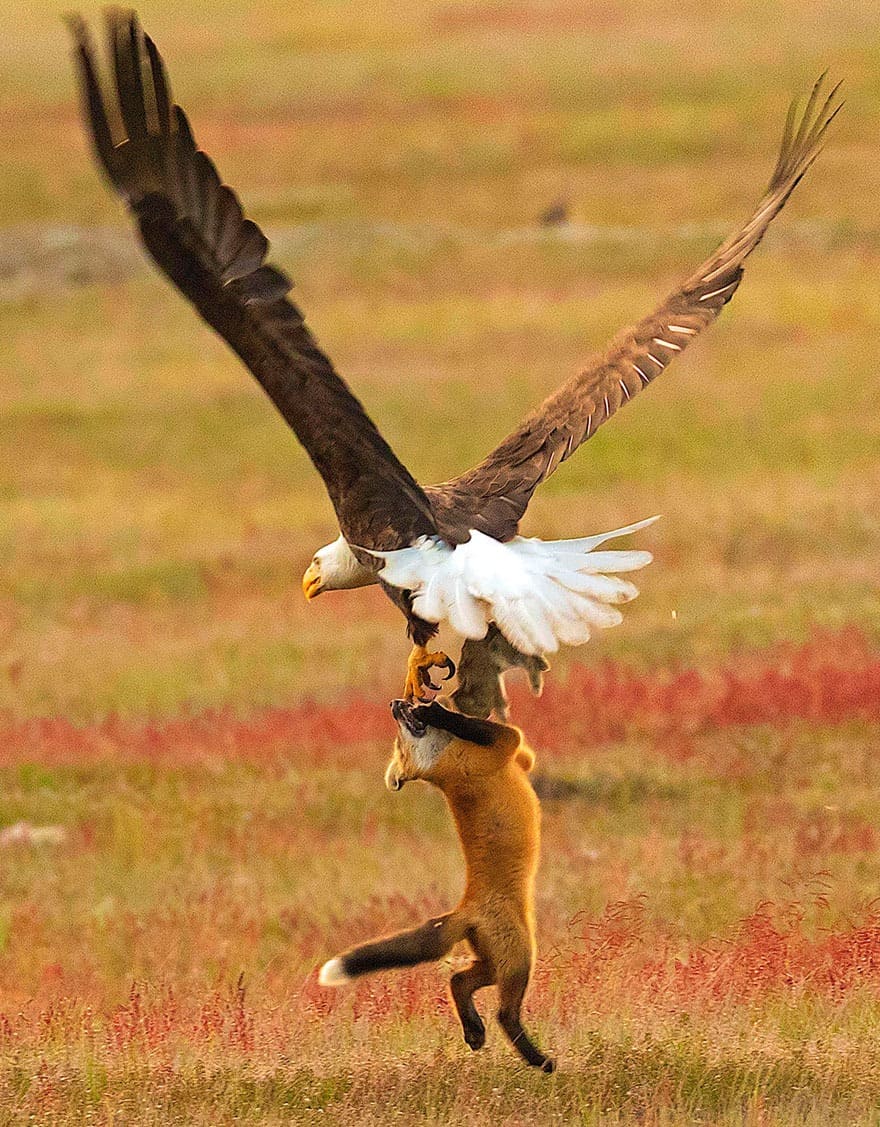 Image source: Kevin Ebi
Image source: Kevin Ebi
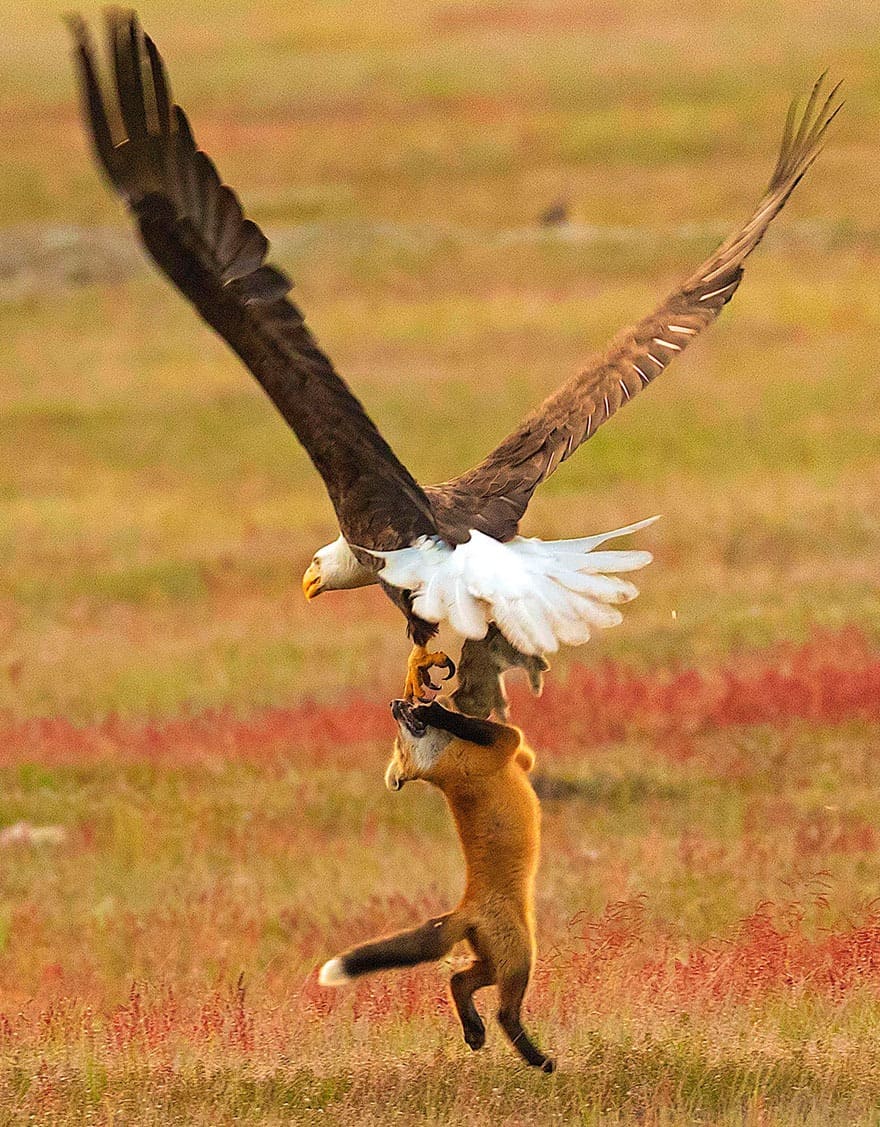 Image source: Kevin Ebi
Image source: Kevin Ebi
 Image source: Kevin Ebi
Image source: Kevin Ebi
In the end, the eagle moved the rabbit to its other claw, causing the fox to let go. The intense battle came to an end in less than 10 seconds.
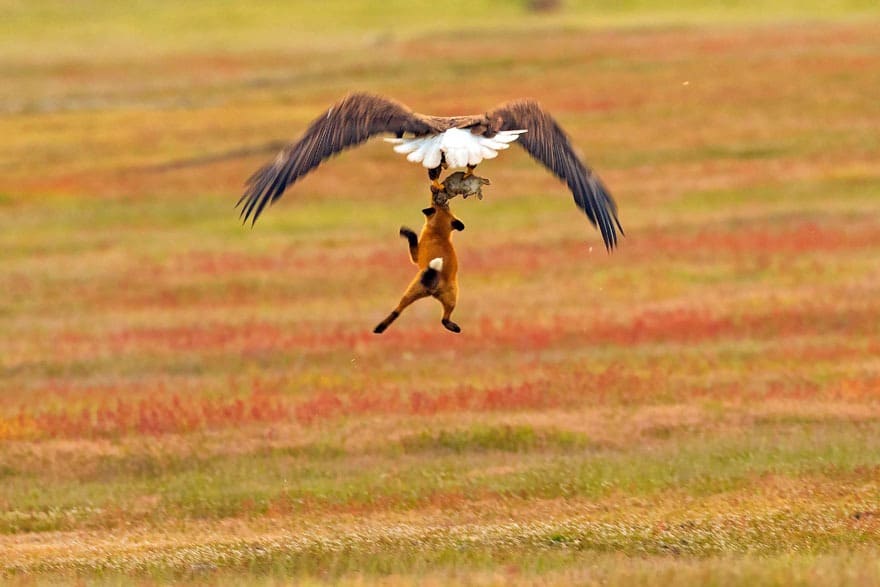 Image source: Kevin Ebi
Image source: Kevin Ebi
For those worried about the fox’s well-being after the fight, Ebi reassures that it was not injured. The fox swiftly bounced back from the encounter and resumed its playful behavior with the other young foxes, showing no visible wounds from the aerial clash.
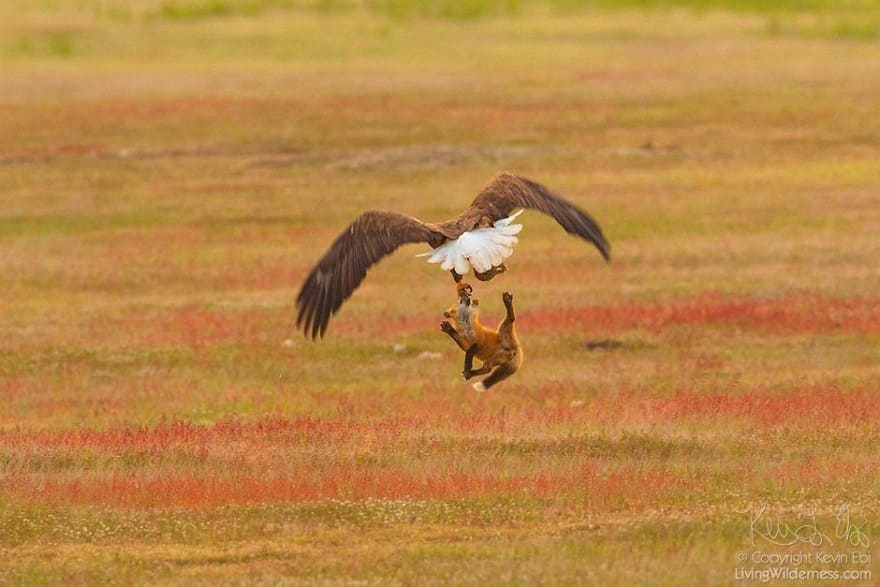 Image source: Kevin Ebi
Image source: Kevin Ebi
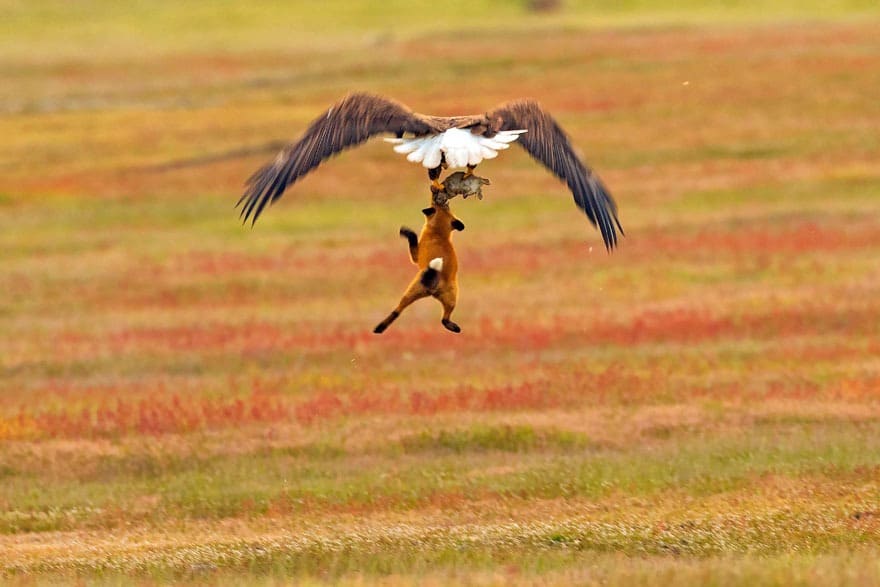 Image source: Kevin Ebi
Image source: Kevin Ebi
 Image source: Kevin Ebi
Image source: Kevin Ebi
 Image source: Kevin Ebi
Image source: Kevin Ebi
-

 GARDEN10 tháng ago
GARDEN10 tháng ago4 Easiest Ways to Get Free Plants
-

 ANIMALS10 tháng ago
ANIMALS10 tháng agoBritish Angler Caught Huge 67-Pound Goldfish in the World
-

 FUNNY10 tháng ago
FUNNY10 tháng ago30 Funny and Perplexing Photos That Make You Laugh All Day
-

 FUNNY10 tháng ago
FUNNY10 tháng ago30 Weirdest Things That People Came Across On The Subway
-

 GARDEN9 tháng ago
GARDEN9 tháng ago30 Shimmering Side Yard Landscape Ideas
-

 ANIMALS10 tháng ago
ANIMALS10 tháng agoKindhearted Driver Rescues Skinny Dog Hiding Near Highway Thanks to His Eagle Eye
-

 DIY & CRAFT10 tháng ago
DIY & CRAFT10 tháng ago19 Easy and Creative DIY Ideas to Enhance Front Yard
-

 FUNNY10 tháng ago
FUNNY10 tháng ago22 Design Fails That Will Make You Laugh Out Loud





